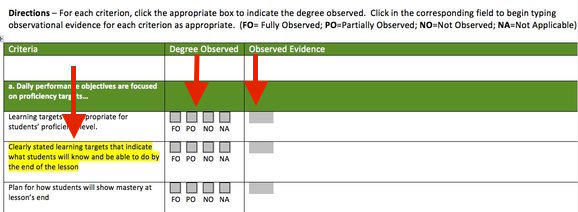3.3 – Performance Assessments
Think
Reflect on what you know about the distinction between formative and summative assessments. In your mind, think about which of the following best describes your understanding of this distinction:
1 = I know them well enough to define these two concepts with confidence
2 = I think I know them
3 = I have heard of them
4 = I do not know them at all
Next, watch the following video on Formative and Summative Assessment.
Now that you’ve viewed the video, Formative and Summative Assessment, how would you rate your understanding of the distinction between formative and summative assessment using the rating scale you used earlier. Has your understanding changed?
Now let’s review two STARTALK professional learning resources focused on formative and summative assessments within the context of performance assessments in the world language classroom. As you explore these resources consider how they can inform the development of your microteaching learning episode and the lesson you will co-teach to students of Arabic and Chinese at California State University, San Bernardino (CSUSB). Note in particular the role students play in the assessment process:
- the TELL Project/STARTALK Performance Assessments Infographic (Links to an external site.)
- the TELL Project/Startalk Performance Assessments Video (view below)
Next, let’s further explore how we can integrate assessment strategies in a distance learning environment. We will view a recorded Think Aloud by Magara Maeda. In this Think Aloud note how Magara Maeda, an instructor of Japanese, uses peer feedback to advance student performance in her blended learning course. Magara teaches using ITV, which is an abbreviation for Interactive Two-Way Video. This is a type of distance learning in which a class is held live in one location and broadcast real-time to one or more remote locations. Consider how you can take advantage of collaborative online tools such as those we have used or shared in our course to provide similar opportunities for students in your distance learning environment.
Activity Details
You will interact with members of your Peer Microteaching Group (PMG) for this observation. Complete the following steps before you interact with your PMG.
Evidence Form
This time we will use an evidence form to make observations on Magara’s Think Aloud. This evidence form is a modified version of the Startalk’s TeacherFolio (Links to an external site.) Classroom Look-Fors (Links to an external site.). This will help us to identify and share a common understanding of the ways in which model world language teachers purposively plan student learning and student performance. Each section focuses on a particular aspect of the TELL Planning 6a-c criteria. You will use this evidence form to evaluate the learning episodes (i.e., the 10-minute teaching episodes) of members of your Peer Microteaching Group. You will also use this form to evaluate the lessons we will teach to the students at CSUSB.
Highlighted Sections Only
Because no one lesson addresses all the characteristics and practices listed in this document, we have highlighted those that are most pertinent to Magara’s Think Aloud. Please first familiarize yourself with this document and the highlighted sections before you view Magara’s Think Aloud. You will only use the highlighted sections to evaluate Magara’s Think Aloud. There are 11 highlighted sections to complete.
Magara Maeda Evidence Form
You can download this highlighted evidence form for Magara’s Think Aloud here: MagaraMaedaEvidenceForm
Marking Your Observations
For each highlighted criterion, you will select the degree to which you observe that criterion in the “Degree Observed” column, e.g., FO=Fully Observed; PO=Partially Observed; NO=Not Observed; NA=Not Applicable. Then, take brief notes of the evidence you observed of this criterion from the Think Aloud in the “Observed Evidence” column. There is a field immediately to the right you should use for this purpose. The following screenshot shows you where you should place your observations.

Part 1: Due before 11:59 p.m. on Tuesday, June 23
- Watch Magara’s Think Aloud video that appears below. Use your copy of the Magara Maeda Evidence Form (Links to an external site.) to make observations on the 11 highlighted sections of this document.
- Click on the following link which will take you to the Module 3.3 Forum Discussion, “Magara Observations”. Once there, follow the instructions.
Module 3.3 Forum Discussion
Part 2: Due before 11:59 p.m. on Wednesday, June 24
On June 24 please return to your PMG discussion topic, “Magara Observations”. Please respond to one of your peer microteaching group member’s posts using one or more of the following as a guide:
- what did you find interesting about your colleague’s posting?
- what additional information might you share with this colleague?
- what question(s) do you have for this colleague based on their posting?
